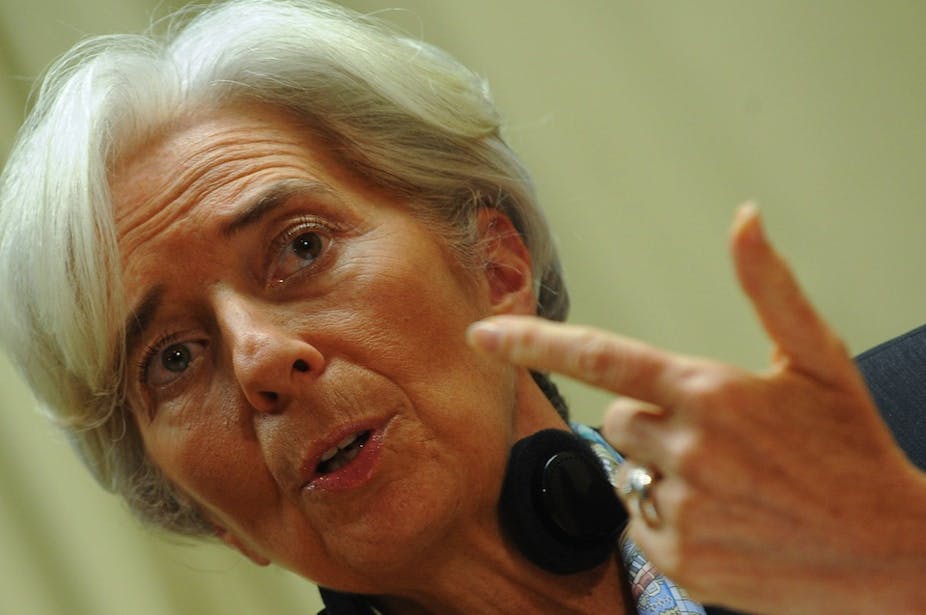The recent economic forecasts of the IMF and OECD about prospects for economic growth remind me of an aphorism about the economist who drowned while crossing a river he estimated that was, on average, four-feet deep. Why did the economist drown? Because the average of expectations is typically greater than the expectation of averages.
This reliance on averages is evident in the International Monetary Fund’s (IMF) predicted world GDP growth of 4% for 2012/13 in its most recent forecast in January. The Organisation for Economic Cooperation and Development (OECD) has also also noted that its “composite leading indicators (CLIs), designed to anticipate turning points in economic activity relative to trend, continue pointing to a positive change in momentum in the OECD as a whole”. This statement is perhaps for the benefit of nervous markets, which tend to move at the slightest hint of pain. But given that these indicators reflect an average across the OECD, the outlook must be greeted with trepidation.
The OECD consists of 34 member countries with vastly different economies, both in terms of size and structure. It is dangerous, in my view, for Australians to react to such news about CLIs positively, as they present an average across those countries and do not take into the contribution to global growth for each of these economies or their linkages to Australia. A closer inspection of the CLIs will reveal the high and low points of the “river”.

A closer analysis of what is happening in the OECD member countries is revealing. It shows that the major five Asian countries (China, India, Indonesia, Japan and Korea) and Brazil are in a slowdown, whereas there is an overall positive change in momentum. The US is exhibiting early signs of recovery, but it is fragile. The Eurozone, the second largest export market for China, India and Japan, is not providing any strong signs of recovery — the IMF outlook projected a mild recession in the Eurozone.
From an Australian perspective, this is problematic for two reasons. Firstly, we are in a precarious growth situation in the sense that we are a two-speed economy, with the higher speed segment — the mining and resources sector — dependent on the sustained demand for commodities from the major five Asian countries. Second, commodity prices appear to be coming off the peaks of recent times.
The commodities index displayed in the graph below shows the most significant fall since the GFC in 2008. Base metals prices, notably copper and coking coal, have fallen and in the short to medium term are unlikely to recover unless there is improvement in the price or volume of demand for such commodities. While this is not a disaster, it does present a scenario for a weaker than expected resources sector.
A recent World Bank report highlights major issues that need to be addressed with China to re-enter a continuous strong growth phase. Sustained long-term economic development in China is crucial to Australia and this is in a precarious state due to a very large amount of opaque debt sitting as bank loans, many of which may require write-offs due to poor investment.
This suggests that there is also a looming banking crisis in China due to the largesse manifested in poorly allocated capital in the form of loans to state-owned firms. This debt is continuously rolled over so that bad debts are inevitable, creating a major risk for the stability of the financial sector. This is a crucial factor for efficient and effective flow of capital and the development of the economy.
The political instability in the Middle East arising from Iran’s apparent ambitions to be a nuclear player and the attempts by the West to stifle these ambitions represent a significant threat to oil prices. A shock to oil prices could see an oil price approach $200 dollars a barrel, according to economist Nouriel Roubini.
Thus, signs that further softening in the economy brought about by a potential fall of in demand for commodities, together with a fall of in commodity prices, will have a significant impact on the Australian economy given the fragile non-resources sector.

Unemployment has risen in the last 12 months and is sitting at 5.2%, but this cannot be expected to remain at these levels given likely further softening in the economy. Other indicators such as building approvals, consumer finance, motor vehicle sales and retail sales are down in all states except for the two resource-heavy states (Western Australia and Queensland). The impact of this slowdown, while not suggestive of a recession, may in fact lead to a period of very low growth. This is exacerbated by the strong Australian dollar, which is harming the tourism and education sectors.
This does not bode well for the estimates of GDP growth for 2011/12 and 2012/13 of 3.25% assumed by Treasury and the pressure on the tax take, which makes the government’s stated intent of achieving a surplus unlikely without cosmetic engineering. This is in the context of a need for a stimulus in the non-resource sectors, which is unlikely.
Therefore it is my view that the Australian economy is in a very parlous state. Unless there is either a recovery in prices for commodities or a sustained growth in the economies of the US and the developed world and thus the Asian countries, we should not be surprised if growth slows down to around 1% of GDP. Worse, we run the risk of stagflation if the spectre of high oil prices result in a supply shock to the Australian economy. This will most likely occur concurrently to a fall in the exchange rate, which is inevitable if the economy falters.
And for these reasons, we should be wary of broad projections of economic growth. There are a lot of places to drown in this global economy.

